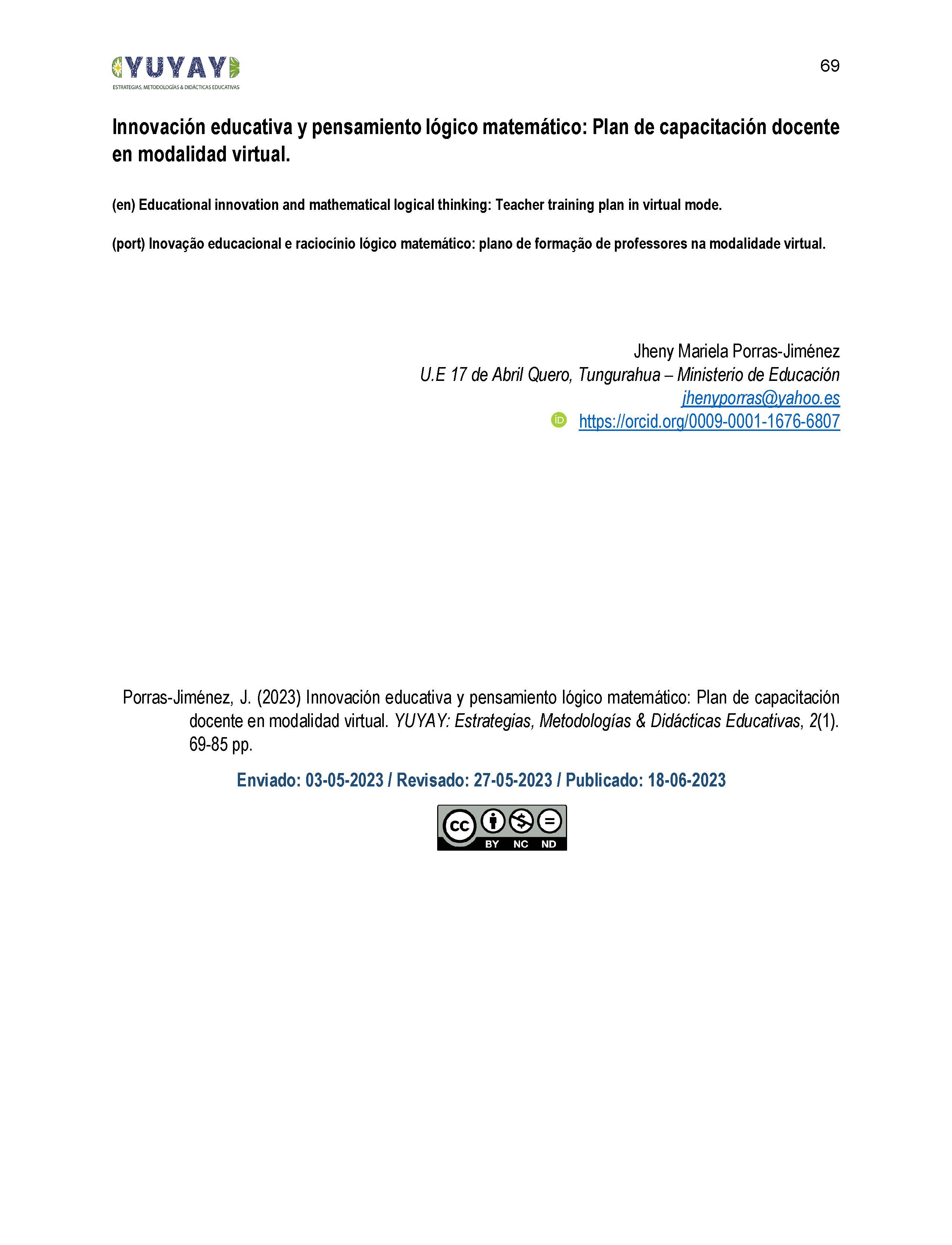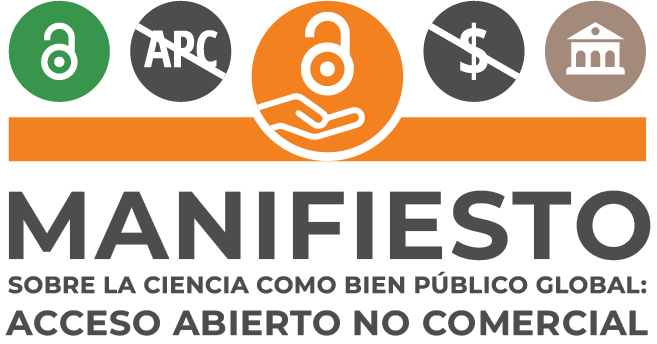Educational innovation and mathematical logical thinking
Teacher training plan in virtual mode
DOI:
https://doi.org/10.59343/yuyay.v2i1.25Keywords:
Mathematical Logical Reasoning, Training, Innovation, Digital tools, MoodleAbstract
The proposal arises as a need (from the teaching exercise) to support with solutions to the difficulty presented by students of 6th year of Basic General Education for the development of mathematical logical thinking, due to the lack of activities conducive to their academic age, that is why it was necessary to design a training plan for teachers of the same level, With a single objective, the application in the educational context understanding that the training will be designed in a dynamic environment where the teacher will be able to learn and understand that innovating new digital tools will improve their teaching role and change their teaching methodology from a simple transmission of knowledge, to develop new digital teaching skills and competencies where new commitments emerge in the learning process. From the problem raised arose the design of an online methodological plan to standardize each stage of the training plan and adapting technological tools to be simple and allow mathematics and therefore mathematical logical thinking to be received assertively through digital environments, developing mathematical operations where the ease of understanding and the resolution of mathematical problems based on interactive games where the Ability to solve reasoning problems.
Downloads
References
Amaiquema, C., & Eduardo, J. (2020). LA ESCRITURA COMO TECNOLOGÍA.
Aprender y divertirse con Educaplay | educativa. (2022). https://www.educativa.com/blog-articulos/aprender-y-divertirse-con-educaplay/
Barrionuevo Rodríguez, K. M. (2020). Uso de la gamificación y el desarrollo del pensamiento lógico matemático en los estudiantes de primero de bachillerato. http://www.dspace.uce.edu.ec/handle/25000/23663
Calleros, C. B. G., García, J. G., & Rangel, Y. N. (2019). Un juego serio para la solución de problemas matemáticos para niños con TDAH. Campus Virtuales, 8(2), 121-140.
Celi Rojas, S. Z., Sánchez, V. C., Quilca Terán, M. S., & Paladines Benítez, M. D. C. (2021). Estrategias didácticas para el desarrollo del pensamiento lógico matemático en niños de educación inicial. Horizontes Revista de Investigación en Ciencias de la Educación, 5(19), 826-842.
Fernández Baroja, M. F. (1979). Niños con Dificultades para las Matemáticas.
Fernández, Y. (2020, mayo 25). Qué es Canva, cómo funciona y cómo usarlo para crear un diseño. Xataka. https://www.xataka.com/basics/que-canva-como-funciona-como-usarlopara-crear-diseno
Genially – CIFE Juan de Lanuza. (2022). https://wp.catedu.es/lanuzadigital/creacion/presentaciones/genially/
Hernández, R. M. (2017). Impacto de las TIC en la educación: Retos y Perspectivas. Propósitos y Representaciones, 5(1), 325. https://doi.org/10.20511/pyr2017.v5n1.149
Guzman, J. (2021, julio 29). ¿Qué es Google Forms y para qué sirve? https://juansguzman.com/blog/que-es-google-forms-y-para-que-sirve/
Mancero, R. E. (2022). Análisis de viabilidad para el desarrollo de un proyecto de aplicación sobre fracciones mediante el uso de recursos digitales en Moodle Cloud, caso: 9no Año de Educación Básica de La Unidad Educativa Vinces. YUYAY: Estrategias, Metodologías & Didácticas Educativas, 1(1), 91-117.

Published
How to Cite
Issue
Section
Categories
License
Copyright (c) 2023 Jheny Mariela Porras-Jiménez

This work is licensed under a Creative Commons Attribution-NonCommercial-NoDerivatives 4.0 International License.
You are free to:
Share — copy and redistribute material in any medium or format.
- Licensor cannot revoke these freedoms if you follow the terms of the license.
Attribution — You must give credit appropriately, provide a link to the license, and indicate if any changes have been made. You may do so in any reasonable way, but not in a manner that suggests that you or your use are supported by the licensor.
NonCommercial — You may not use the material for commercial purposes.
NonDerivatives — If you remix, transform, or create from the material , you may not distribute the modified material.
No additional restrictions — You may not apply legal terms or technological measures that legally restrict others from making any use permitted by the license.






















